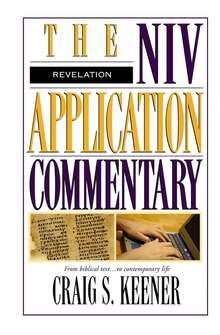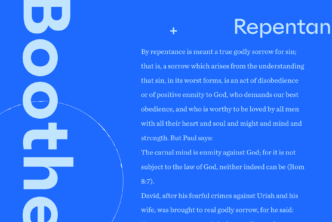The past couple of years have been eventful, to say the least. In 2020, we got a front-row seat to the COVID pandemic as it knifed its way through the world. The impact it left (and still leaves) on our collective psyche has been strenuous. Thankfully, things seem to be getting back to a semblance of normalcy. But just two years later, we get word that another debilitating virus is on the rise: monkeypox, a disease related to smallpox. Just when we thought we were about to catch a break, we hear instead about catching another virus.
I’m not medically trained, so I don’t pretend to be an expert on global health crises. But from what I can tell, monkeypox isn’t something to be toyed with. As The New York Times reported, while the mortality rate for monkeypox is low, the virus can be quite painful. And, sadly, it’s not uncommon to find the “severe cases” among children. In response, the Biden administration recently declared the monkeypox outbreak a “Public Health Emergency.” Like everyone else, I’m praying for a quick end to this outbreak and that it doesn’t spread any further.
The Revelation connection
As the news broke about monkeypox, prophecy watchers weren’t far behind with their commentary. In one rather odd video, for example, the virus was labeled as “The Terrors of God,” with a connection being made to Revelation: “So the first angel went and poured his bowl on the earth, and a foul and painful sore came on those who had the mark of the beast and who worshiped its image” (Rev 16:2 NRSV). Similarly, another article with the title “Monkey Pox Bible Prophecy” features a video that takes the virus as an instance of fulfilled biblical prophecy.
Along the same lines, Mark Hitchcock, a well-known prophecy author, recently proposed that monkeypox might be connected to the fourth horseman of the apocalypse spoken of in Revelation 6:7–8. According to these verses, this horseman has the power “to kill with sword, famine, and pestilence, and by the wild animals of the earth” (NRSV). Hitchcock reasons that, because monkeypox is yet “another spillover illness from the animal kingdom,” then it perhaps has end-times significance. While he doesn’t think monkeypox is, in fact, the fourth horseman, he does suggest it’s a “prelude” and “faint foreshadow of what’s coming in the end times.”
It seems with every new event—be it political, cultural, or medical—there’s always someone ready to connect it with a biblical passage as part of their speculation about the future. This happens a lot with Revelation. Indeed, it is lamentable that prophetic texts like Revelation are frequently cited in ways that show little regard for their larger context. When this happens, misunderstandings naturally follow. We saw this with COVID, which I’ve written about before. And now I fear that we are beginning to see it again with monkeypox. So, let’s ask: Is an old virus like monkeypox a specific sign for our generation?1
Reading with wrong assumptions
Part of the answer to that question is due to the assumptions prophecy teachers have about Revelation. Many of them, for example, assume Revelation is all about future events. It’s true that Revelation describes itself as a “prophecy” (Rev 22:19). But this doesn’t mean everything in it concerns our future. We need to ask whether John (the author of Revelation) was referring to just his future or to his future and our future. For example, in Revelation 2:10, a prophecy is given to the Christians at Smyrna that some of them will be persecuted and imprisoned. This seems to refer to an event that would occur sometime in the first century—hence, to John’s future but our past. But if we’re looking at Revelation 22:12, which refers to Jesus’s second coming, then this would obviously refer to both John’s future and our own. The point is that just because Revelation may, at times, speak about “the future,” it’s not necessarily talking about our future.
But what about Revelation 6 and 16—the plague passages mentioned above? Do these passages make predictions about how the world is headed toward tribulation—a future time in which earth will experience disease, pestilence, and viruses like monkeypox? The problem is in the question itself: it assumes a wrong idea about the tribulation. Contrary to what many may think, Revelation doesn’t teach that the end-times tribulation is a future event. It says instead that it has already arrived.

The Tribulation of Revelation
Take a look at Revelation 12:1–9.2 This text gives a highly compressed, behind-the-scenes look at how Jesus’s resurrection and ascension defeated the powers of darkness. The scene is of a woman (Mary/Israel) giving birth to a child (Jesus), with a dragon (Satan) standing ready to consume the child as soon as he’s born. But at just the right moment, the child is whisked away to heaven (the ascension) before the dragon can strike. A war subsequently breaks out in the heavenly realm, with the dragon being cast to the earth in humiliating defeat. (I really want this version of the nativity story in my yard this Christmas!)
The point of the passage is to show that even though Jesus has been enthroned (Rev 12:10) and the dragon cast from heaven, his defeat is not completed yet. The dragon still has the ability to wage war against followers of Jesus (Rev 12:17). The picture being painted is how earth’s trials began two thousand years ago when Jesus ascended to the Father, but they will end at the final resurrection, when Jesus returns (1 Cor 15:24–28; Heb 10:12–13). That interval period between Christ’s ascension and his return is rightly understood as a time of tribulation.
This idea is consistent with other passages in the New Testament. The early Christians believed they were living in the end times (Acts 2:17; 1 Cor 10:11; 1 Tim 4:1–3; 2 Tim 3:1–5; Heb 1:1–2; 2 Pet 3:1–3; 1 John 2:18). Jesus himself taught that his followers will undergo tribulation (Matt 13:21; John 16:33). Paul thinks the same way, telling Christians to be “patient in tribulation” (Rom 12:12 ESV). In fact, Revelation is clear on the matter, too. John says he and the seven churches to whom he writes are currently in “the tribulation” (Rev 1:9 NRSV). That’s why we shouldn’t be surprised when we experience chaos, death, disease, viruses, pandemics, wars, and other causes of suffering, including monkeypox. These things are not unique to us. We are living in the end times—like all Christians for the past two thousand years. The tribulation describes the “age” or aeon between Christ’s ascension and his return in glory, so what we call “the tribulation” is short-form for “the era of the church.” The end-times tribulation isn’t coming; it’s here.
Where do Revelation 6 and 16 fit into all this?
The passages that speak about the four horsemen of the apocalypse (Rev 6:1–8) and the bowls of wrath (Rev 16) are part of a much larger section in Revelation that describes three cycles of tribulation. The first round is described as seven seals (6:1–17; 8:1–5), the second as seven trumpets (8:6—9:21; 11:15–19), and the third as seven bowls (16:1–21).
Scholars often debate how to make sense of these passages. One question is whether or not we should see the seven-part cycles as separate events that occur one right after the other. This idea is that after each of the seven seals are opened, the seven trumpets follow, which are themselves followed by seven bowls. This view can be called the “chronological view.”
However, it’s probably best to interpret the seven seals, seven trumpets, and seven bowls as describing the same events. This view is sometimes known as the “recapitulation view.” Each seven-part cycle is told three different times, with each cycle describing the same event with increased intensity. I agree with Ian Paul, a biblical scholar and commentator on Revelation, when he says, “John has a sequence of visions, not a vision of sequences.”3
We need to realize that numbers in Revelation take on highly symbolic value (e.g., note the frequent use of the numbers three, six, seven, twelve, and one thousand). This means it’s not necessary to understand the seals, trumpets, and bowls as describing an exact, literal number of events. The seven seals, seven trumpets, and seven bowls should be read instead as a threefold ensemble of texts that poetically (albeit tragically) describes what life on earth is like without the truth, beauty, and goodness of God.
One piece of evidence to support this idea is how each of the three cycles concludes with a description of the end of the world (e.g., Rev. 6:12–17; 8:1–5; 11:15–19; 16:17). If each of these endings describes separate, chronological events, then we have a fairly big problem on our hands—namely, the idea that the earth will be destroyed multiple times.4 But this isn’t a problem if we interpret the cycles as multiple descriptions of the same reality.
Back to the future …
But do these cycles of tribulation describe future events? Sort of. It’s true, for example, that the end of each cycle describes the end of the world—a future event, obviously. But what about the beginning parts of each cycle (such as the four horsemen of Revelation 6)? Do these describe exclusively future events? I don’t think so.
For example, take a close look at the four horsemen texts (Rev 6:1–8). When the first seal is opened, a conquering horseman is unleashed (vv. 1–2). The second seal brings forth a horseman who takes peace from the earth (vv. 3–4). The third seal summons a horseman who brings about dire economic trouble (vv. 5–6). Then comes the fourth seal, which, as we saw earlier, brings death by sword, famine, plague, and wild animals (vv. 7–8). As scholars have noticed, what’s interesting is how each of these descriptions could be applied to any era of human history. There’s nothing in the text that suggests it’s talking just about the future.
It’s true that the fourth horseman is “given authority” over one-fourth of the earth in order to bring destruction to its population (Rev 6:8 NRSV). Some may think this describes a future event. But such a view isn’t necessary. For starters, remember that numbers in Revelation are used literarily, not literally—symbolically, not woodenly. Also, recall this passage is part of a larger context (Rev 6–16). That’s why we need to read this fourth seal (the fourth horseman) in light of the trumpets and the bowls (and vice versa) in order to fully appreciate the story John is telling.
Let’s start by taking a look at the fourth trumpet. This text describes how one-third of the sun, moon, and stars are darkened (Rev 8:12). This is John’s way of describing the undoing of the created order. In Genesis, the sun, moon, and stars were created to help govern the day and night—thus giving order to the formless chaos (Gen 1:14–19). In Revelation, this is reversed: the created order deteriorates into chaos. And when we get to the fourth bowl, we see the entire sun becoming an agent of destruction: the sun “was allowed to scorch people with fire” (Rev 16:4 NRSV). This shouldn’t be taken literally; it isn’t a description of an Oklahoma summer! To the contrary, it’s John’s way of telling the ongoing story of what happens to the cosmos when God removes his gracious protection.
By telling this same story three different times (in three cycles), John shows how creation progressively dissolves into chaos and how the severity of the situation increases incrementally:
- The fourth seal/horseman brings devastation to one-fourth of the earth.
- The fourth trumpet brings devastation to the earth by darkening one-third of the sun, moon, and stars.
- The fourth bowl employs the whole sun (and not just a fraction of it) to harm the earth.
The same progression of intensity can be seen when you look closely at the other trumpets and bowls, too. The literary effect is one of heightened urgency—that, without God, the cosmos is spiraling out of control.
What Revelation reveals …
When it comes to interpreting the plagues of Revelation, it’s best to keep everything in the perspective of its Jewish literary context. You will miss a lot, for example, if you read Revelation without familiarizing yourself with the creation stories of Genesis or, especially, the plague stories of Exodus (not to mention the Prophets, too!). And given the way numbers, symbolism, and metaphor are employed throughout the text, Revelation resists being squeezed into literalistic categories, especially as a play-by-play account of the future.
Revelation doesn’t predict monkeypox or COVID or the Black Plague or any other health crisis. It doesn’t lead us to identify any specific disease or virus as an instance of fulfilled prophecy. What it does do, however, is reveal in general terms what happens to the cosmos when the caretakers of earth (humans) aren’t in relationship with the Creator of the earth. Without God—who alone is True, Good, and Beautiful—the earth groans and hurts.
Simply put, Revelation provides us with conceptual categories to help us make sense of a world that has gone terribly wrong. And—if we have ears to hear—it can also impart an unwavering peace as we wait for the King to return and make all things new.
***
Related resources
Revelation, 3 vols. (Word Biblical Commentary, Volume 52: a-c | WBC)
Regular price: $110.99
- Here’s an interesting fact: monkeypox is not even a new virus. It’s been around for several decades. In fact, according to one epidemiologist, monkeypox has probably been around for centuries and perhaps even millennia. It may be worth asking, then, how an old virus like monkeypox should be seen as a modern fulfillment of biblical prophecy.
- On this passage and the concept of “tribulation” (as well as how the two relate), I have found Keener’s thoughts especially helpful, which have served to shape much (though not the entirety) of my own. See Craig S. Keener, Revelation (Grand Rapids: Zondervan, 2000), 34–35, 318–25, 327, 333.
- This quote comes from personal correspondence with Ian.
- As Keener says, “The sort of events closing the seals, trumpets, and bowls cannot repeat unless the world as we know it can come to an end several times (these three references plus 19:11–21)!” (Revelation, 34; see also 398).






